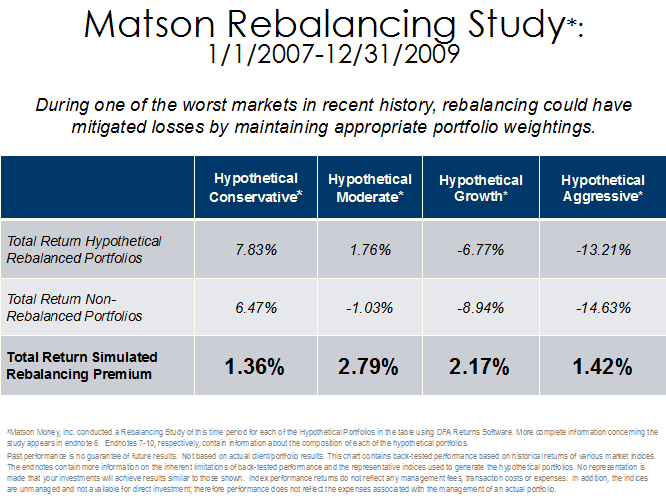When and why to rebalance your portfolio
Post on: 24 Май, 2015 No Comment

More From Your Money
Insurance Bill: Know the Big Change That Will Impact Your Policy Claim
Missed Rally in Debt Funds? Still Time to Invest, Says ICICI Pru AMC
Pradhan Mantri Suraksha Bima Yojana: 10 Things to Know
EPFO Declares Average Interest of 8.67% in 3 Years to FY15
Whether you manage your financial portfolio yourself or through a financial advisor, you must know when exactly is the right time to rebalance it to maximise gains and minimise risk.
Investment decisions often throw a challenge of risk vs. return. In the pursuit of maximising returns, most of us often end up ignoring the risk associated with it. As a result, you dont have an optimal risk-reward portfolio. By optimising the risk, you can ensure that the portfolio being created is in sync with your risk appetite and stay invested for a longer period of time.
However, returns from individual assets in a portfolio vary over time and might deviate from your original target asset allocation. In order to restore asset allocation to optimal risk levels, individuals should consider rebalancing their portfolios periodically based on changes in market conditions and risk-tolerance levels.
Let us examine why, when and how one should rebalance a portfolio and also assess the factors which prompt for rebalancing in the current market conditions.
Why rebalance your portfolio?
Over a period of time, some asset classes may provide higher returns than others while some give suboptimal results. In order to recapture the original risk-return characteristics, your portfolio should be rebalanced periodically.
For example, let us consider an individual who invested Rs 6,000 in equities and Rs 4,000 in debt a year ago. And now, the debt funds are valued at Rs 6,000 and the equity funds are valued at Rs 5,500. A target allocation of 60 per cent in equity and 40 per cent in debt is no longer good enough. As per this example, the investor is holding 52 per cent in debt and 48 per cent in equities. In order to regain the original composition of his portfolio, he should sell a part of his debt investments and invest more in equities.
How to rebalance your portfolio
While some argue that by rebalancing a portfolio, one is essentially selling the winners and buying the losers. However, it is also important to note that the markets are volatile by nature and it is hard to tell the winning picks from the rest. By withdrawing at the right time, you can also ensure that you maximise the returns from your investments and exit a pick before it falls from its high price. Common strategies here include time-based rebalancing or threshold rebalancing.
While time-based rebalancing emphasises on change in portfolio allocation at predefined intervals, threshold rebalancing emphasises on percentage of deviation. The rule of threshold rebalancing reads: Rebalance the portfolio once the current allocation deviates from the target allocation by 10 per cent.
When you should rebalance your portfolio

It is important to note that rebalancing a portfolio is associated with costs in the form of transaction costs, to execute the process, and capital gains, if applicable. Instead of reviewing your portfolio more often, limiting the frequency of rebalancing to once or twice a year is a cost efficient and recommended practice.
Frequent rebalancing of your portfolio would result in higher transaction costs and taxes as well as impact the net return from your investments. Portfolio rebalancing decisions should be driven by change in its composition, macro-economic changes and/or changes in ones risk appetite.
If we consider the current scenario of Indian markets, the debt markets have performed well during the recent times on the back of interest rate cuts implemented by the apex bank, Reserve Bank of India. The equity markets remained highly volatile and provided suboptimal returns during this time. When translated to your portfolio, this means that debt funds have dominated equity funds in terms of the returns they provided. Also, this increases debt exposure above the optimal level.
However, the current state of the rupee may not bode well with the debt market. The debt markets might not perform as well in the current year as they did last year. Equity markets, on the other hand, remain deeply undervalued. The undervalued equity market stands out as an investment opportunity which can provide good returns in the future. Therefore, by rebalancing your portfolio at this time you will be ensuring that you are selling your debt funds at a higher price and buying equity funds at a lower price.
While rebalancing your portfolio, consider the tax aspects of long-term and short-term capital gains. Also make a note of the commissions associated with these investments. If you are investing through mutual funds, know the exit load criteria of the funds you hold. If you are investing through SIPs, check whether all the investments made are in line with the exit load conditions of the fund.
ArthaYantra.com provides personal financial advice online.
Disclaimer: The opinions expressed in this article are the personal opinions of the author. NDTV Profit is not responsible for the accuracy, completeness, suitability, or validity of any information on this article.
Story first published on. July 20, 2013 12:04 (IST)














